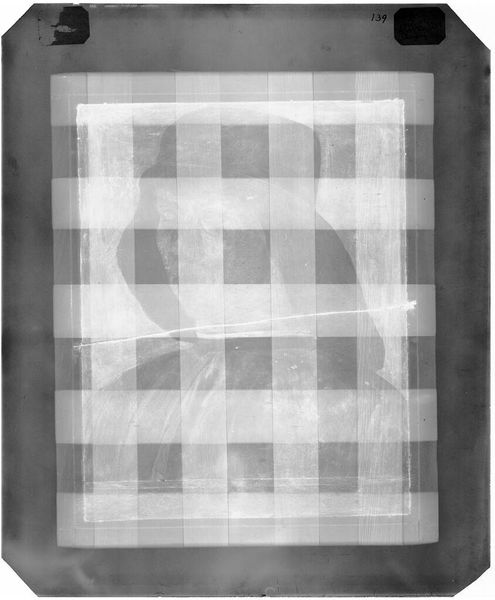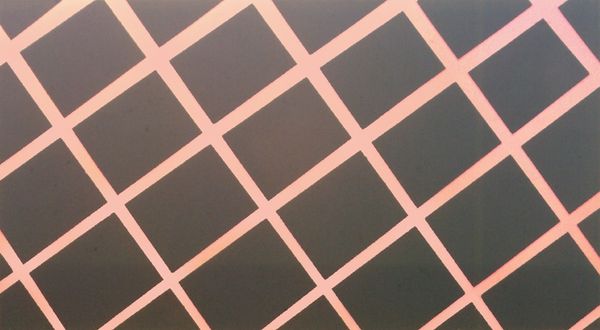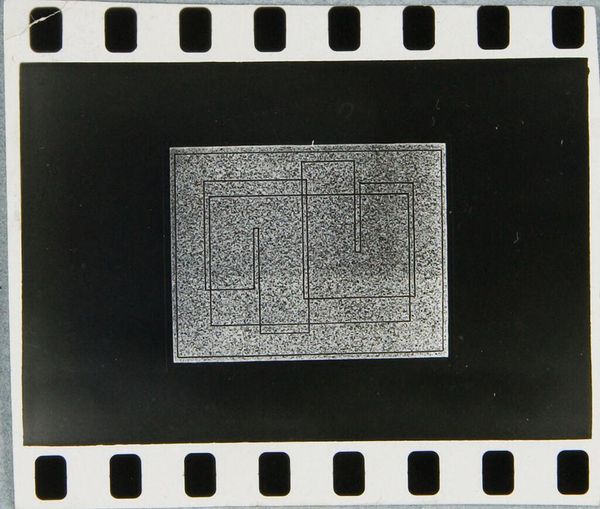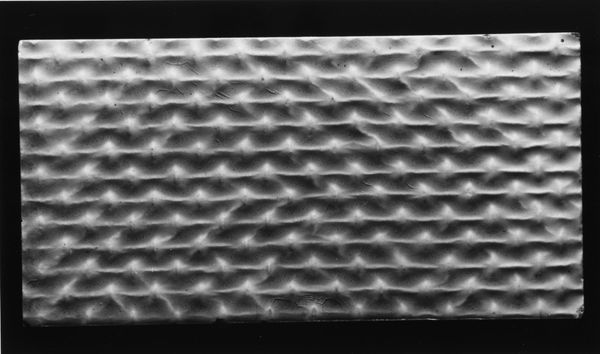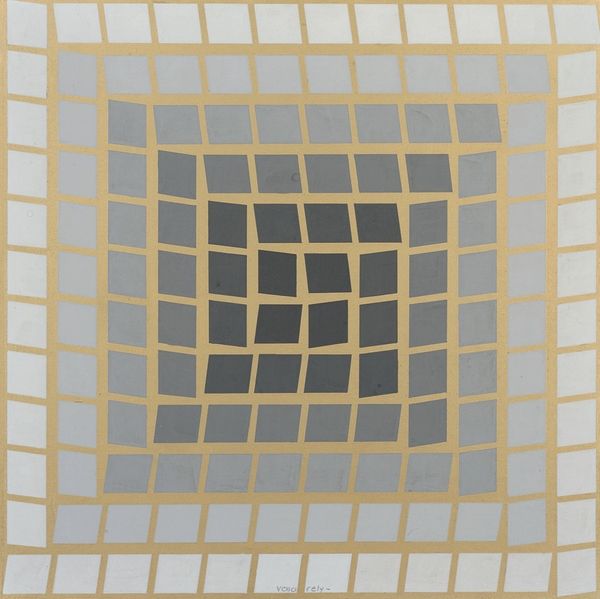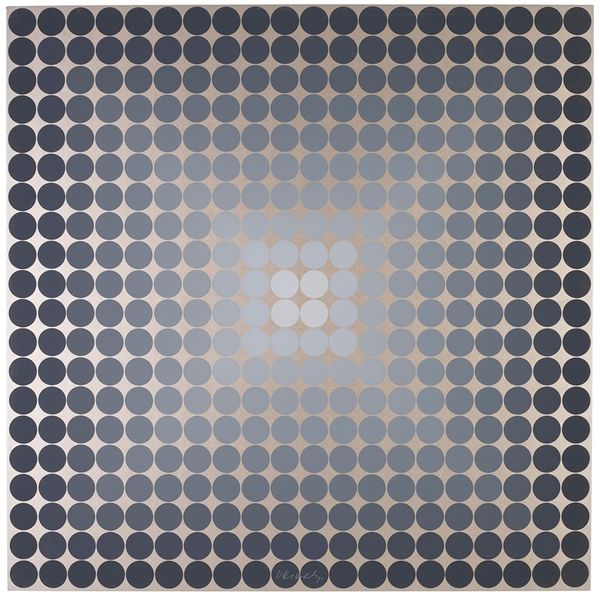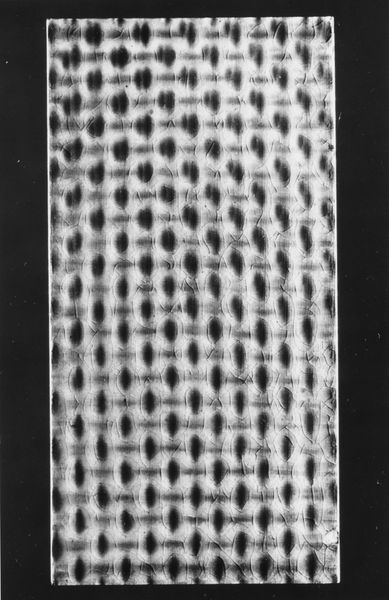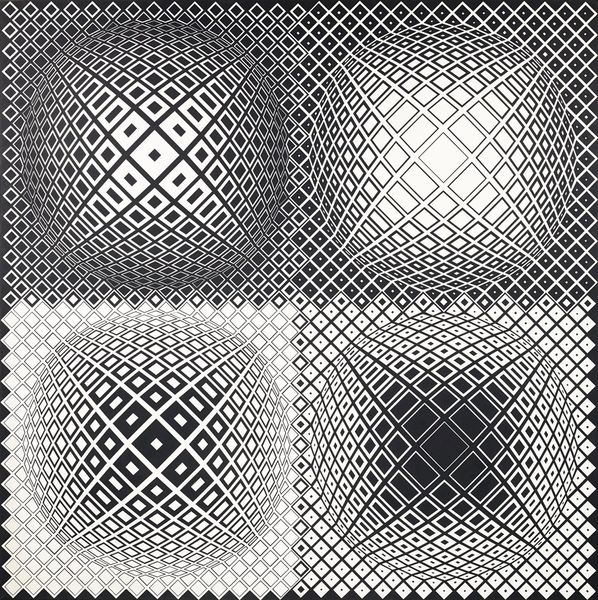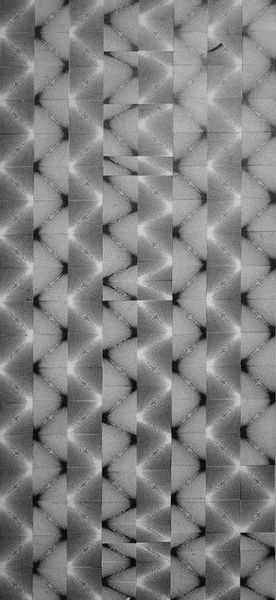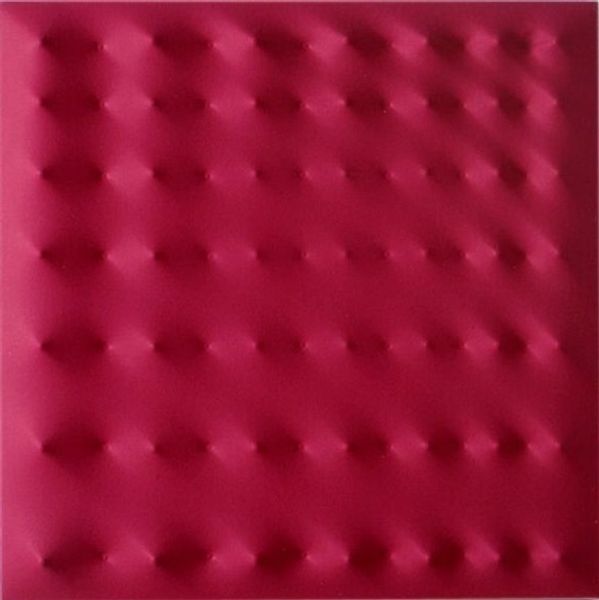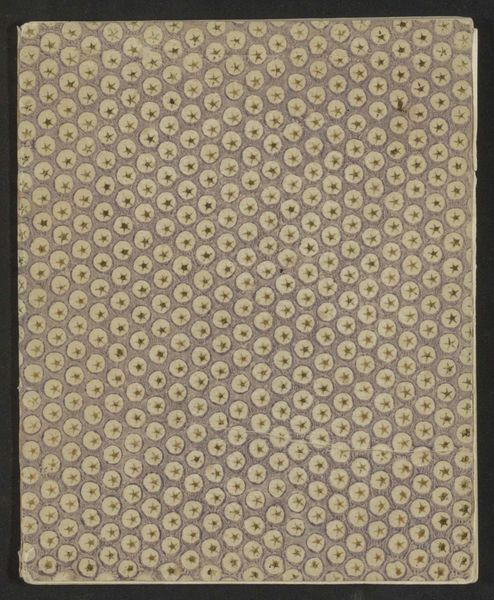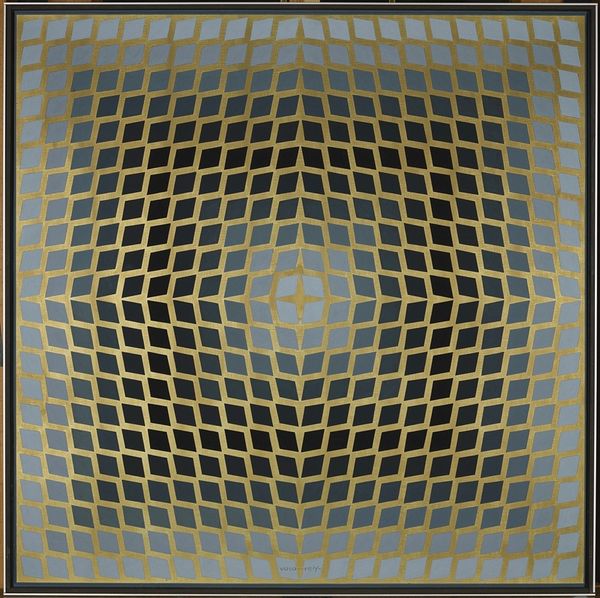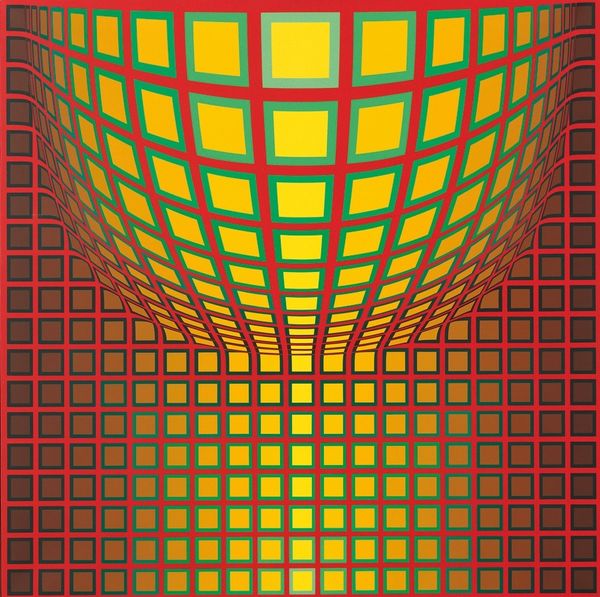
#
conceptual-art
#
organic shape
#
abstract pattern
#
geometric
#
abstraction
#
line
#
hard-edge-painting
Copyright: Lothar Charoux,Fair Use
Curator: At first glance, the artwork feels remarkably ordered. It’s very subdued but also strangely captivating. Editor: This is "Squares," a work by Lothar Charoux from 1970. I think that initial sense of order you describe is critical to the hard-edge painting style it employs, as well as being part of the Conceptual Art movement that the piece participates in. To me, it speaks volumes about the intersection of design and fine art. Curator: I see what you mean, the material aspects really speak to me: what kind of surface, what paint or technique did he use to get such clean lines? There’s such carefulness in the application that I am drawn to it immediately. It makes me wonder what art-making tools he was working with in the seventies. Editor: It's interesting to consider that carefulness as almost a protest in its own right. Considering the sociopolitical upheaval of the time, an image of unwavering stability and repetition certainly holds a unique meaning. I’m drawn to the implied narrative suggested here. How does the idea of rigid structure affect an understanding of identity formation or confinement within established systems? Curator: That’s a good point to consider, how the squares work within a confined plane. Do you think this was about pushing boundaries or setting limitations? Editor: Potentially both. Hard-edge paintings have frequently questioned boundaries around production—between artistic work and industrial manufacture. It's interesting to see where, perhaps, the labor involved intentionally mimics or mirrors the repetition inherent in labor practices of that time. It leads to all sorts of interesting considerations of what artistic labor is actually worth. Curator: The use of hard lines definitely creates that machine-like aesthetic that relates to manufacturing and industrial processes. It gives the piece an incredibly sterile feeling, but that makes it thought-provoking and highlights labor and process within artmaking. Editor: Ultimately, art like this encourages a dialogue between history and modern theory, urging us to see beyond the immediate visual appeal. It highlights the intricate layers of context that are intricately woven into even the seemingly simplest designs.
Comments
No comments
Be the first to comment and join the conversation on the ultimate creative platform.
